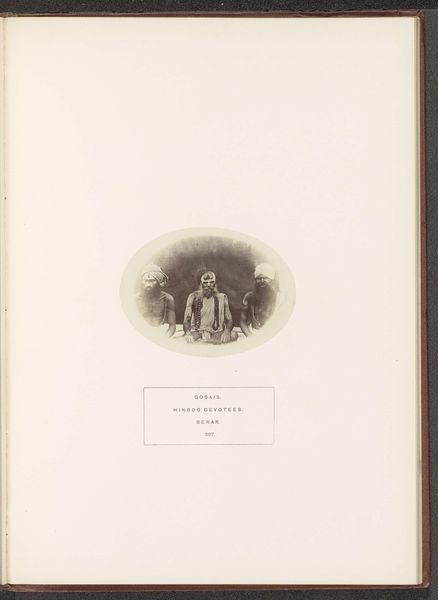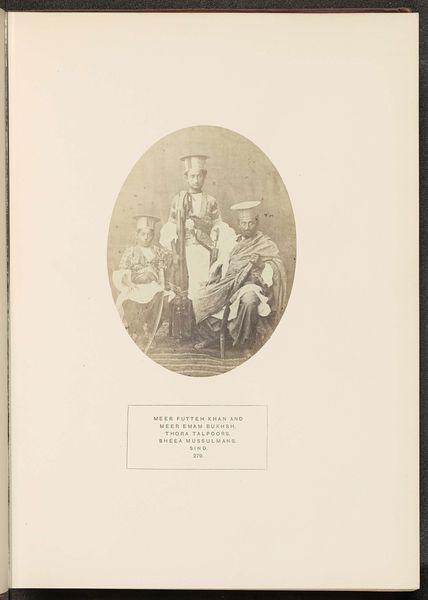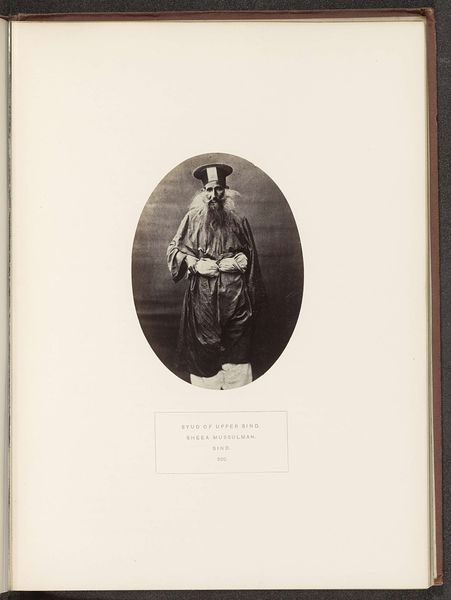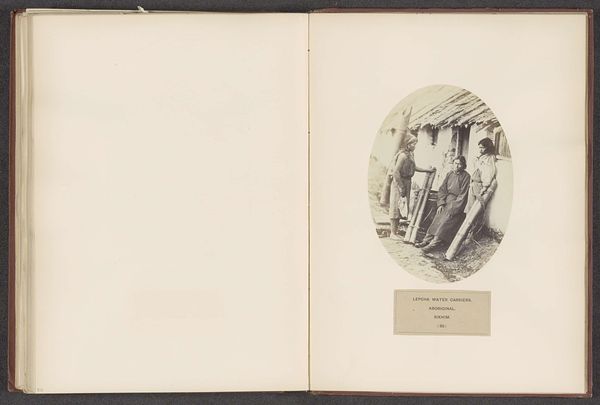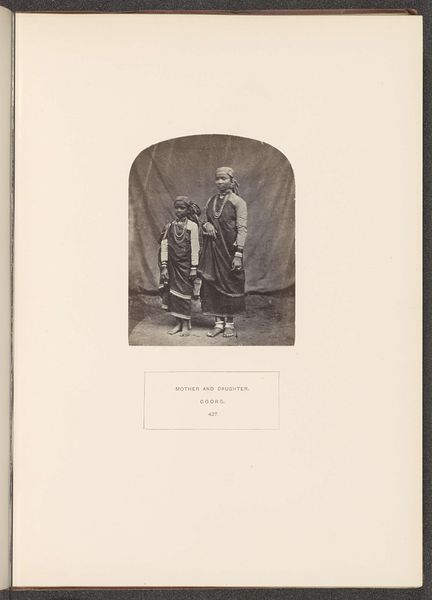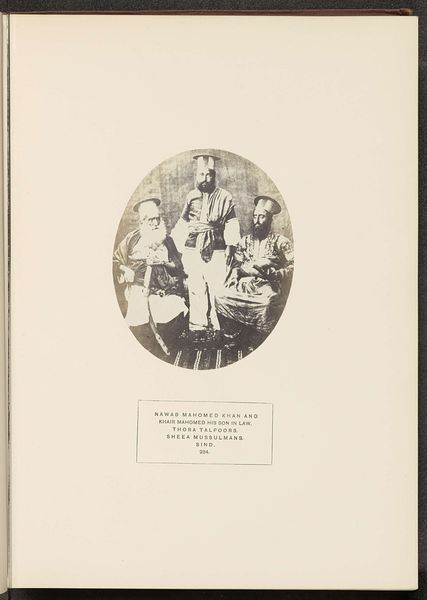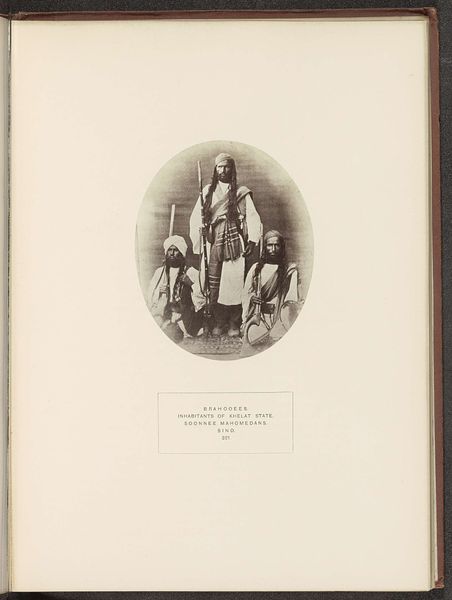
Portret van Khan Mahomed, een borduurder, samen met drie medewerkers before 1872
0:00
0:00
print, photography
#
portrait
# print
#
asian-art
#
photography
Dimensions: height 146 mm, width 109 mm
Copyright: Rijks Museum: Open Domain
Curator: This photograph, simply titled "Portret van Khan Mahomed, een borduurder, samen met drie medewerkers," taken sometime before 1872 by Henry Charles Baskerville Tanner, it’s incredible, don’t you think? Editor: It is! There’s a quiet dignity radiating from this group; a sort of solemn pride that time hasn't quite diminished. I imagine their voices hushed, a devotion to the intricate craft they represent… but it also evokes thoughts of old tintypes—the fragility of captured moments. Curator: Indeed, and placed within the broader context, these images from colonial India take on an added dimension. Photography was employed as a tool to document and classify people under British rule, creating a visual record infused with power dynamics. Editor: Absolutely. One has to wonder, looking at Khan Mahomed – with his elaborate beard and calm, knowing gaze – what he thought of the photographer. Was this representation empowering, or another form of cultural appropriation? He appears a majestic figure, and his trade is clearly held in high regard, showcased beautifully in this family portrait. Curator: And note how the very act of framing the photo, presenting the embroidery and those who created it, elevates this traditionally underrepresented form of labour to the level of art. It forces us to reflect on which cultural stories get visibility and which are hidden in the shadow. Editor: It feels almost reverent, this spotlight cast on craftsmanship…it calls forth a feeling of melancholy…an elegy to artistry that perhaps modernity overshadows. Curator: That's beautifully put! It brings forth many points for meditation—historical forces at play, artistry’s cultural impact, and how a single photograph encapsulates the complexity of human stories. Editor: It does give you pause. You can see layers of life behind it all, in their composure, in their intricate creation—so rich. It invites contemplation more than judgment; respect more than critique. A powerful photograph, to say the least.
Comments
No comments
Be the first to comment and join the conversation on the ultimate creative platform.

